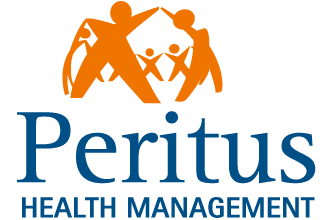Hearing conservation
Hearing loss caused by noise hazards at work is preventable but once your hearing has gone it won’t come back. Employees exposed to loud noise may also suffer a permanent sensation of ringing in the ears, known as tinnitus.
Hearing loss prevention is possible through compliance with the Control of Noise at Work Regulations 2005.
Factors that contribute to hearing damage are noise levels and how long people are exposed to the noise, daily or over a number of years.
The most efficient and effective way of ensuring hearing conservation and legal compliance is by a programme of controlling noise through technical and organisational means that protect workers at source, e.g. changes in process, reducing vibration (damping), reducing time spent in noisy areas and health surveillance for hearing loss to monitor the effectiveness of the programme. The use of hearing protection relies on employee compliance and can be costly in the longer term.
Health surveillance is required for noise hazards where your noise survey has highlighted that:
- Exposure is over 80dB(a) and the individual is known to be at risk e.g. they already suffer from hearing loss or are particularly sensitive to damage;
- Exposure is over 85dB(a)
This is a requirement of the Control of Noise at Work Regulations.
Baseline hearing test is recommended on commencement of exposure or as soon as possible. (Quarry Regulations require baselines to be done prior to commencement).
Annual hearing tests should continue for 2 years after commencement.
3 yearly hearing tests can then be done if the hearing test results are stable, if not a review of exposure and annual hearing tests are recommended until the hearing loss is stable.
If employees are identified with a hearing deficit or problem, you will need to think about what risks this may pose in their work activities. We strongly recommend that you involve each employee with their personal risk assessments – talk to them about their individual needs and ask them whether they are experiencing difficulties at work. Remember to reassure them that you are looking to help as they may be concerned about their job security and not give you a full picture.
- Can they hear audible warning alarms such as fire alarms? – check their response to an unexpected alarm and if they don’t appear to respond, discuss your concerns with them. Explore alternative options such as high-intensity strobe lights or vibration pads.
- Can they hear warning shouts, vehicle reversing alarms or horns? – check their response to an unexpected alert and if they don’t appear to respond, discuss your concerns with them. Explore alternative options such as a ‘buddy’ system, or other technologies to enhance the alarm systems.
- Can they hear in meetings or training sessions? – ensuring the trainer is aware of the need to speak clearly and facing the individual may be all that is required. Explore alternative options such as an interpreter, one speaker at a time rules, seating plans, voice mics, sound loops etc.
- Can they hear on the telephone? – amplified telephones or telephone amplifiers and an extension ring can be used to boost handset volume and control tones to help make the call sound clearer. Some phones have a bright light that flashes when the phone rings and some have hearing aid compatibility that means the phone works with most hearing aids that have a hearing loop (T) setting. Most smartphones have key accessibility features for people with hearing loss. Features usually include enhanced audio for phone calls and for hearing aid wearers. There may be a loop / telecoil function / hearing aid setting on the device. Consider these options when contracting phones.
- Are they included at work? – hearing impairments can cause social isolation. It may be that they cannot hear the conversation, but also they may have to put more effort in to keep up with a conversation. They may need more visual cues to put context together to understand the topic of conversation. Reducing background noise in the rest rooms or providing awareness training for colleagues may be helpful.
Action on Hearing Loss gives an overview of products and technology available to help individuals in the workplace.
The Access to Work programme can provide practical and financial support for people who have a disability to help them staff in work.
Noise-induced hearing loss can be caused by work or leisure activities, such as the use of earphones, attending music festivals or gigs, riding a motorbike, shooting etc.
To protect against unfair claims, you will need evidence of your noise surveys, employee exposure, control measures, employee training, ear protection issue and health surveillance.
We can support you with the audit of your processes to ensure you have evidence that you have fulfilled your duty of care and compliance obligations.
What is involved in hearing surveillance?
Peritus Health Management carries out noise surveys and supports you with action planning to reduce noise at source, in transmission, or at employee level depending on your workplace activities.
Each test involves:
- Examination of the ear
- Audiometry
- Comparison with previous results
- Interpretation of audio according to HSE categorisation scheme and clinically defined system
- Explanation of results to employee with advice regarding effect of noise on hearing and the correct use of hearing protection.



